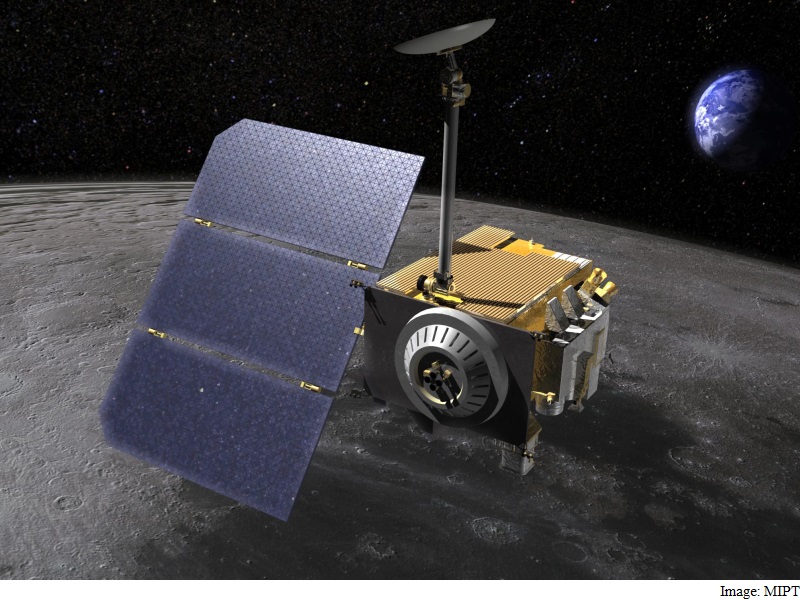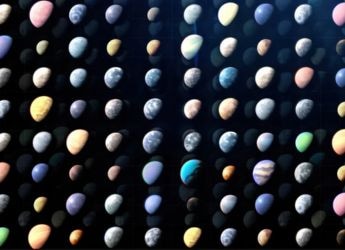- Home
- Science
- Science News
- The Moon's Water Reserves Are From Asteroids, Study Claims
The Moon's Water Reserves Are From Asteroids, Study Claims

Using computer simulation, the scientists discovered that a large asteroid can deliver more water to the lunar surface than the cumulative fall of comets over a billion year period.
At the beginning of the space age, during the days of the Apollo programme, scientists believed the moon to be completely dry.
However, in the1990s, obtaining data from Nasa's Lunar Prospector probe, scientists found signs of the presence of water on the moon.
In recent years, lunar missions (the Indian Chandrayan probe, the American LRO, data from the Cassini probe and Deep Impact) have brought scientists new information that there are indeed considerate quantities of water and hydroxyl groups in the near-surface soil on the moon.
"We came to the conclusion that only a very small amount of water that arrives with a comet stays on the moon, and from this decided to explore the possibility of an asteroid origin of lunar water," said one of the researchers VV Shuvalov from Moscow Institute of Physics and Technology in Russia.
The scientists decided to take a closer look at asteroids and found that they consist of initially non-differentiated construction materials of the solar system and contain a rather considerable proportion of water.
One-third of all asteroids that fall on the moon have a velocity of less than 14 km per second just before impact. When this happens, the major part of the fallen body remains in the crater: 30-40 percent is left after an oblique impact, and 60-70 percent after a vertical one.
"We have concluded that the fall of asteroids containing water could generate "deposits" of chemically bounded water inside some lunar craters," Shuvalov said.
"The fall of one two-kilometre size asteroid with a rather high proportion of hydrated minerals could bring to the moon more water than all of the comets that have fallen over billions of years," he noted.
The research was discussed in an article recently published in the journal Planetary and Space Science.
Get your daily dose of tech news, reviews, and insights, in under 80 characters on Gadgets 360 Turbo. Connect with fellow tech lovers on our Forum. Follow us on X, Facebook, WhatsApp, Threads and Google News for instant updates. Catch all the action on our YouTube channel.
Related Stories
- Samsung Galaxy Unpacked 2025
- ChatGPT
- Redmi Note 14 Pro+
- iPhone 16
- Apple Vision Pro
- Oneplus 12
- OnePlus Nord CE 3 Lite 5G
- iPhone 13
- Xiaomi 14 Pro
- Oppo Find N3
- Tecno Spark Go (2023)
- Realme V30
- Best Phones Under 25000
- Samsung Galaxy S24 Series
- Cryptocurrency
- iQoo 12
- Samsung Galaxy S24 Ultra
- Giottus
- Samsung Galaxy Z Flip 5
- Apple 'Scary Fast'
- Housefull 5
- GoPro Hero 12 Black Review
- Invincible Season 2
- JioGlass
- HD Ready TV
- Laptop Under 50000
- Smartwatch Under 10000
- Latest Mobile Phones
- Compare Phones
- Honor Win RT
- Honor Win
- Xiaomi 17 Ultra Leica Edition
- Xiaomi 17 Ultra
- Huawei Nova 15
- Huawei Nova 15 Pro
- Huawei Nova 15 Ultra
- OnePlus 15R
- Asus ProArt P16
- MacBook Pro 14-inch (M5, 2025)
- OPPO Pad Air 5
- Huawei MatePad 11.5 (2026)
- Xiaomi Watch 5
- Huawei Watch 10th Anniversary Edition
- Acerpure Nitro Z Series 100-inch QLED TV
- Samsung 43 Inch LED Ultra HD (4K) Smart TV (UA43UE81AFULXL)
- Asus ROG Ally
- Nintendo Switch Lite
- Haier 1.6 Ton 5 Star Inverter Split AC (HSU19G-MZAID5BN-INV)
- Haier 1.6 Ton 5 Star Inverter Split AC (HSU19G-MZAIM5BN-INV)

















